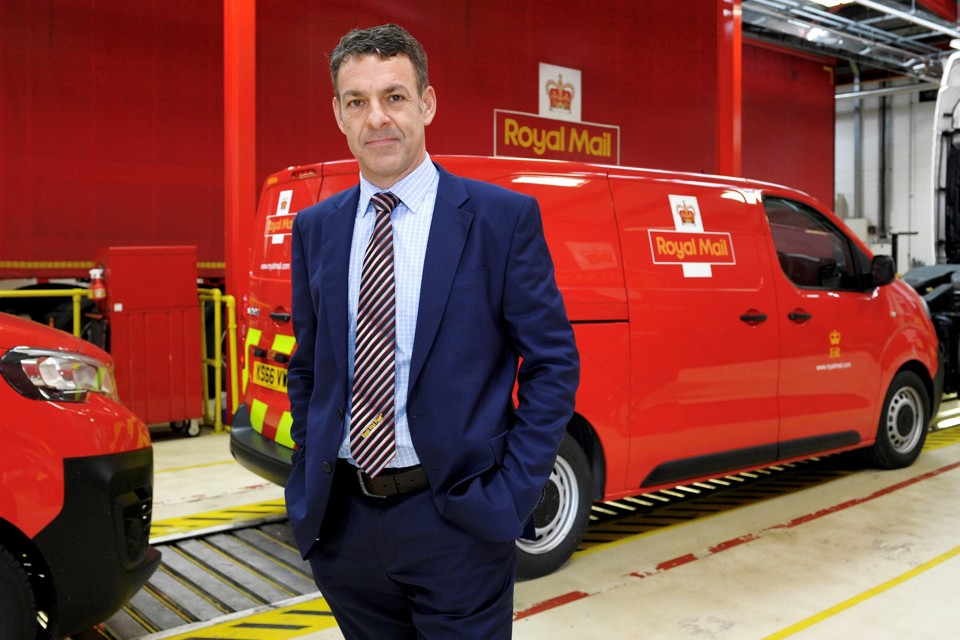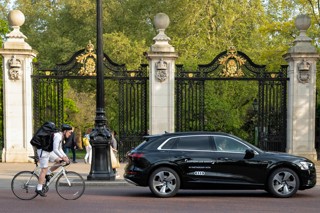Electrification of fleets is rising up the corporate agenda, with many large organisations looking to adopt electric vehicles (EVs) in increasing numbers.
But there are still major obstacles to overcome, including availability of suitable vehicles and charging infrastructure.
Three representatives of major UK fleets talked about their plans for electrification and the challenges they are facing at the recent Oxford EV Summit.
Fleet News: Why are you interested in electrifying your fleet?
 Catherine Hutt (left), mobility innovation lead, Addison Lee Group: We think we are really well placed to make the transition to electric for three key reasons. First, we have a three-year replacement cycle, so, as and when new vehicles come to market, we can include them in the fleet.
Catherine Hutt (left), mobility innovation lead, Addison Lee Group: We think we are really well placed to make the transition to electric for three key reasons. First, we have a three-year replacement cycle, so, as and when new vehicles come to market, we can include them in the fleet.
Second, we have a lot of data. We know where our vehicles are going, we have our own allocation despatch programme and therefore know where the charge points should be and how that should work.
Third, we’ve got control of our fleet, so if we want to make a change we can get through all of our 5,000 vehicles within 12 weeks. We can move quickly when the technology is there.
Peter Harris, director of sustainability, UPS Europe: Going beyond the diesel truck to alternative fuels is a big part of our agenda, and electrification is one of the key players here.
The part of our business that deals with urban distribution is eminently suitable, at least on paper, for electrification. It operates in cities doing multi-drop operations – 100 or so a day – using 7.5- or 3.5-tonne vans.
They all operate on a back-to-base basis, so they go back to the depots where they can be plugged in overnight which is great for recharging.
Paul Gatti, fleet director, Royal Mail: We are part of the Optimise Prime project which is led by Hitachi Vantara and brings together power, technology, fleet and transport companies. It aims to understand the impact of mass migration to EVs on the grid.
The other partners are Centrica, Hitachi Capital Vehicle Solutions and Scottish and Southern Electric network, and the project’s goal is to have 3,000 EVs in use and sharing data in the next couple of years.
Fleet News: What challenges has the availability of electric vehicles posed?
Catherine Hutt: We have been asked why Addison Lee hasn’t transitioned to EVs sooner and one of the key reasons is the availability of vehicles. I love a BMW i3, for example, but you can’t really deliver first-class chauffeur-driven services in one, it’s just not the right tool for the job. We have been looking at pure electric vehicles for many years and have a breakthrough pilot at the moment with five Audi e-trons joining our fleet for six months. We are very excited because it is the first time we have been able to operate pure electric vehicles.
 Peter Harris (left): There has been a lack of product, particularly from OEMs, and when that product is available it tends to be expensive and, in many cases, there are range restrictions. We have been working with EVs now for 10 years. We started with a vehicle called a Modec. This was an early entry into the market which was actually very effective, but the company then ceased to exist and that option was no longer available.
Peter Harris (left): There has been a lack of product, particularly from OEMs, and when that product is available it tends to be expensive and, in many cases, there are range restrictions. We have been working with EVs now for 10 years. We started with a vehicle called a Modec. This was an early entry into the market which was actually very effective, but the company then ceased to exist and that option was no longer available.
In the absence of product we moved to converting our own vehicles from diesel to electric and partnered with Tevva in the UK. We learned a lot from that, but it’s not the endgame.
We can’t do conversions for ever, so in the past year or two we’ve been working with Arrival and, with some other organisations, we are developing an urban distribution vehicle from the ground up.
Given the pace of change in this space, I would be confident to say the vehicle challenges which I’ve laid out are on the edge of being solved.
Paul Gatti: We currently have 105 electric vans on our fleet and have just purchased an additional 190. We would have liked more, but vehicle supply is an issue: we don’t feel that manufacturer targets align fully with local council and government
aspirations, so we need some help there.
Fleet News: What challenges are you facing with charging infrastructure?
Catherine Hutt: The charging side of things is a big barrier for us. We don’t have a back-to-base fleet: our drivers take the vehicles home at night and not all of them have off-street parking, so they don’t have home chargers.
We are reliant on on-street chargers and more to the point we are reliant on rapid on-street chargers. For us, it’s got to be 50kW or nothing. We cannot expect our drivers to sit there and wait for 7kW or 11kW because it reduces the time they have to carry out trips which reduces their earning potential, which is not acceptable.
We conducted an independent study a couple of years ago that highlighted there would be a need for more than 8,000 rapid chargers in London alone, and that’s just for the private hire fleet.
If you look at the mayor’s initial transport strategy that came out just over a year ago, that aimed at 300 by 2020, you can start to see where the challenge lies.
Peter Harris: It doesn’t matter how many EVs you have if you can’t charge them. Our experience has been one of grid infrastructure pinchpoints, having the challenge of getting enough power into the building to recharge the fleet overnight.
We initially solved this using conventional grid upgrades, but found those to be expensive. More recently we commissioned and built what we think is the world’s first combined smart grid and energy storage solution for one of our fleets. This has dramatically raised our EV recharge capacity, so for us we feel the infrastructure challenge is also on the edge of being solved.
Paul Gatti: There are still huge challenges with infrastructure as Peter has said. What is my off-grid supply capacity and how much is it going to cost me to upgrade? Can I get landlord consent? Believe it or not, that is one of the biggest challenges we have currently. Do I fast charge? Do I rapid charge?
Also, are charging points compatible with the vehicle? Are they the latest open charge point protocol, will it talk to our back office system including telemetry? How many different types of cables do I need? Is it AC or DC? How will my drivers pay for it? It goes on and on.






















Login to comment
Comments
No comments have been made yet.